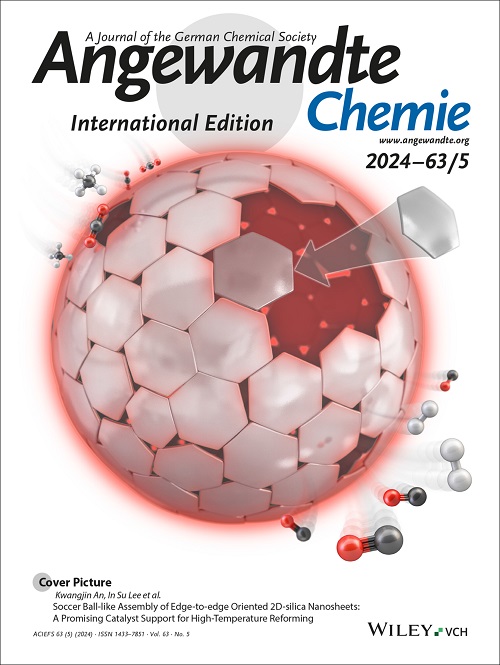Single-Step Insertion of Organic Sulfur Into a Fe6C Carbide Carbonyl Cluster, Including the Natural Amino Acid L-Cysteine: Vibrational Circular Dichroism and Chirality Transfer.
IF 16.9
1区 化学
Q1 CHEMISTRY, MULTIDISCIPLINARY
引用次数: 0
Abstract
We present a straightforward and versatile synthetic route to Fe6C carbide carbonyl clusters containing organosulfur ligands, including the chiral amino acid L- and D-cysteine. Reaction of the reduced cluster [NEt4]4[Fe6C(CO)15] (1) with thiols (RSH) or disulfides (RSSR) affords novel functionalized hexa-iron carbide clusters [NEt4]3[Fe6C(CO)14(SR)] (R = CH3, 2; C6H5, 3; p-C6H4CH3, 4; L-cysteine, L-5; D-cysteine, D-5). Compounds 2-5 have been characterized by Fourier transform infrared (FT-IR), 1H and 13C{1H} nuclear magnetic resonance (NMR) spectroscopy, and the molecular structures of 2-4 have been determined by single-crystal X-ray diffraction (SC-XRD). The chirality of the L-5 and D-5 enantiomers has been investigated by vibrational circular dichroism (VCD), and this represents the first VCD study of chiral metal carbonyl clusters. Combined analyses of VCD and calculated density functional theory (DFT) spectra clearly point out the occurrence of chirality transfer from the chiral organosulfur ligand to the CO ligands, as indicated by the presence of VCD bands in the νCO region of both L-5 and D-5. This unprecedented transfer of chirality among different ligands arises from close interactions between the CH2 and CH hydrogens of coordinated cysteine and the CO shell of the clusters.含天然氨基酸l -半胱氨酸的Fe6C碳化物羰基簇中有机硫的一步插入:振动圆二色性和手性转移。
我们提出了一种简单而通用的方法来合成含有有机硫配体的碳化铁6c羰基簇,包括手性氨基酸L-和d -半胱氨酸。还原簇[NEt4]4[Fe6C(CO)15](1)与硫醇(RSH)或二硫化物(RSSR)反应得到新型官能化六碳化铁簇[NEt4]3[Fe6C(CO)14(SR)] (R = CH3, 2;C6H5, 3;p-C6H4CH3 4;半胱氨酸,置之不理;D-cysteine D-5)。用傅里叶变换红外(FT-IR)、1H和13C{1H}核磁共振(NMR)对化合物2-4进行了表征,用单晶x射线衍射(SC-XRD)对化合物2-4的分子结构进行了表征。用振动圆二色性(VCD)研究了L-5和D-5对映体的手性,这是第一次对手性金属羰基簇进行VCD研究。VCD谱和计算密度泛函理论(DFT)谱的结合分析表明,L-5和D-5的νCO区均存在VCD带,表明手性从手性有机硫配体向CO配体转移。这种前所未有的手性在不同配体之间的转移是由配位半胱氨酸的CH2和CH氢与簇的CO壳之间的密切相互作用引起的。
本文章由计算机程序翻译,如有差异,请以英文原文为准。
求助全文
约1分钟内获得全文
求助全文
来源期刊
CiteScore
26.60
自引率
6.60%
发文量
3549
审稿时长
1.5 months
期刊介绍:
Angewandte Chemie, a journal of the German Chemical Society (GDCh), maintains a leading position among scholarly journals in general chemistry with an impressive Impact Factor of 16.6 (2022 Journal Citation Reports, Clarivate, 2023). Published weekly in a reader-friendly format, it features new articles almost every day. Established in 1887, Angewandte Chemie is a prominent chemistry journal, offering a dynamic blend of Review-type articles, Highlights, Communications, and Research Articles on a weekly basis, making it unique in the field.

 求助内容:
求助内容: 应助结果提醒方式:
应助结果提醒方式:


